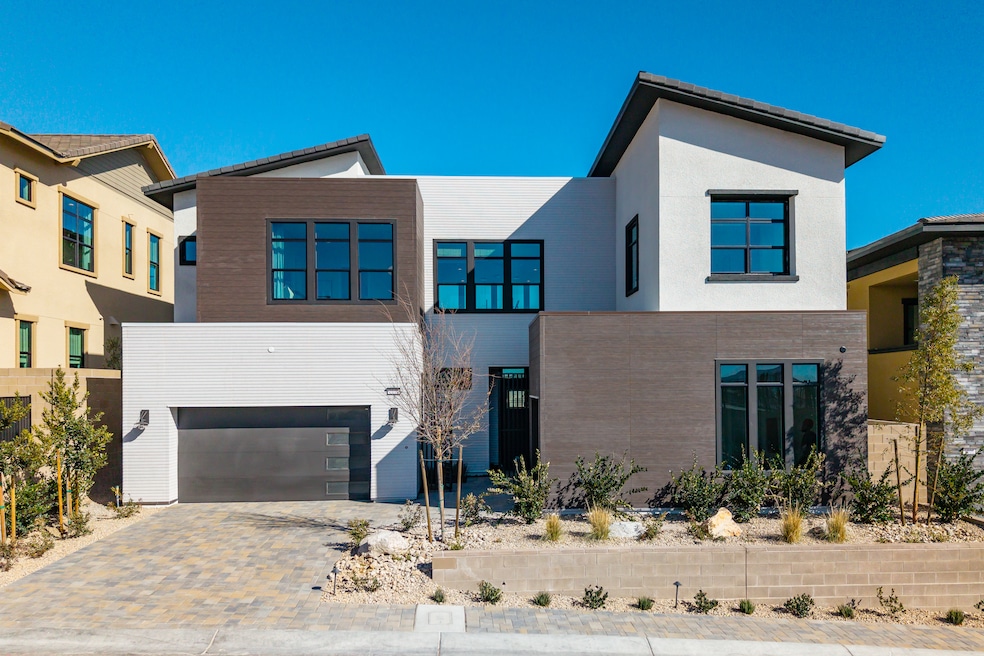Japan-based Sekisui House says it’s built more homes than any other homebuilder in the world. For the past eight years, it’s steadily grown its presence in the United States by acquiring major homebuilders. Now, it’s bringing its proprietary natural-disaster-resistant homebuilding technique to the West through its brand, Shawood.
Under the name SH Residential Holdings, the Japanese company ranks sixth among the largest homebuilders in the country, with nearly 15,000 homes sold last year. Since Sekisui House’s inception in 1960, the builder says it has completed almost 3 million homes.
Sekisui House entered the U.S. market in 2017 with the acquisition of Utah-based Woodside Homes, then expanded with the acquisition of Texas-based Chesmar Homes and Washington-based Holt Homes in 2022, followed by Idaho-based Hubble Homes in 2023.
Last year marked the company's largest acquisition, a $4.9 billion purchase of Richmond American Homes and its holding company, M.D.C. Holdings. That purchase propelled the company from a top 20 builder rank to No. 6, according to trade publication Pro Builder’s list based on company-submitted data.
"With Sekisui House, the vision is to bring that Japanese craftsmanship and the design philosophy to the U.S.," Woodside’s Chief Operating Officer, Roger Gannon, told Homes.com in an interview.
While the changes Sekisui House has made to the more traditional homebuilders it's acquired appear minimal from the outside, the builder has made a more noticeable impact with its own Shawood line imported from Japan.
Sekisui House decided to debut Shawood in the western United States not just to provide strongly built homes that offer added protection against wildfires and earthquakes, but also because of the proximity to Japan, simplifying logistics.
These homes are built using a unique system with specially sourced, treated, and cut lumber. They are also designed with a connection to the outdoors that the company says provides a holistic approach to wellness.
Proprietary process
Shawood homes are made with post-and-beam construction and sustainably sourced lumber from Scandinavia. The lumber is sent to Japan, where it’s laminated by gluing multiple layers of boards together for maximum strength. It is then cut individually for each house on a precise computer-aided machine.
Those cut lumber pieces are shipped to the United States in a kit containing metal joints that fit together like a 3D puzzle. At the work site, long pieces of lumber are fitted tightly and then secured with pins and bolts.
“No cutting occurs on site, it has to fit very precisely,” said Gannon.

The fin-like metal fasteners measure one-eighth of an inch wide, requiring intense accuracy that Gannon said has taken years to master. The process requires retraining workers putting together Shawood homes in the United States and perfecting measurements that change across regions.
Sekisui House seeks to create homes that can exceed design possibilities, while offering structural strength and natural-disaster resilience limited by traditional construction, according to Gannon.
The Shawood lumber lamination process results in the home being able to better withstand earthquakes, tsunamis, and typhoons, according to Sekisui House.
The approach was born out of the devastation of Japan’s Great Hanshin earthquake in 1995, said Gannon, a 6.9 magnitude natural disaster that killed about 5,000 people. Given a few building code differences, the Shawood homes in the United States are built closely to how they’re built in Japan. Shawood also builds in Australia, where it's built in 13 developments, according to the website.
American homes are traditionally built by stick framing, using 2x4 or 2x6 pieces of lumber to create trusses and platforms, but with post-and-beam building, lumber pieces are much larger and able to support more weight. The method allows for larger swaths of open space, creating more expansive floor plans and dramatic placements for windows.
Letting the outside in is part of Sekisui House's focus on wellness. The builder believes its designs offer an added level of well-being for residents. Each Shawood home comes with an environmentally friendly energy package to ensure the home has net-zero emissions with solar panels, a battery storage system, and an electric vehicle charger.
The pre-cut kit also creates less construction waste than traditional homebuilding.

Currently, building a Shawood home takes about two-thirds the time of a typical build, said Gannon, who expects that timing to improve. There does remain a delay between purchasing a home and having the kit arrive on-site.
"If you look at construction cycle times for products, particularly in this price range, on what it's taking for home builders to produce a home, I would be pretty happy to place a pretty substantial bet that we will still beat most of them," said Gannon.
Sekisui House debuted its first Shawood home in 2020 as an innovative concept home at the International Builders’ Show in Las Vegas.
Sekisui House has sold roughly 70 Shawood homes since building its first in the Temecula, California, development, Sommers Bend. Homes listed for sale in that project start at $1.6 million for a three-bedroom with four-and-a-half bathrooms totaling 3,203 square feet. The priciest home rings $2.1 million for four to five bedrooms, up to five and one-half bathrooms, and nearly 5,000 square feet with a four-car garage.
Like many other builder projects, Shawood homes come with pre-designed floor plans depending on the neighborhood, and optional floor plan changes. All interior selections come from local trade partners.

As an option, homebuyers can also opt for Shawood’s proprietary Bellburn siding, a ceramic cladding that’s fade-, scratch-, fire-, and earthquake-resistant.
“Shawood is intended to be a premium product in the U.S., regardless of what consumer segment we’re aiming to provide the homes for,” said Gannon. “Our research shows that consumers are very willing to [and] there's a demand for higher quality."
Shawood just launched this summer in Folsom, California, as the third location, joining Las Vegas and Temecula.
